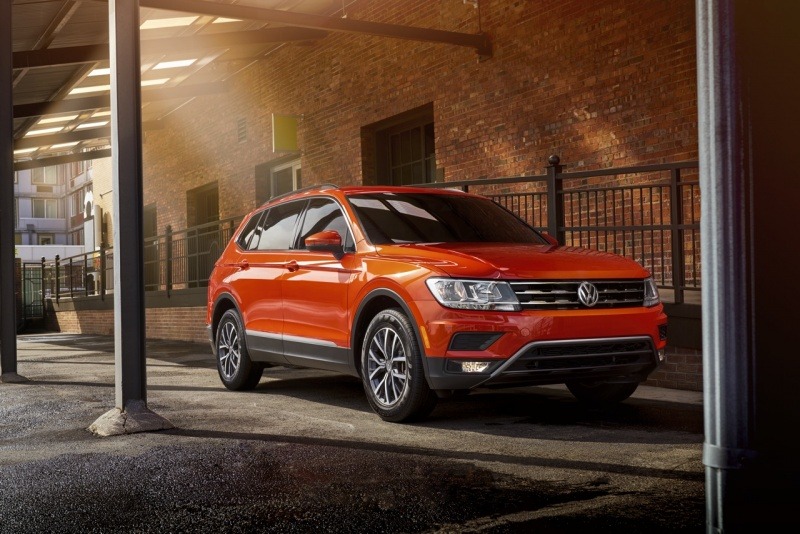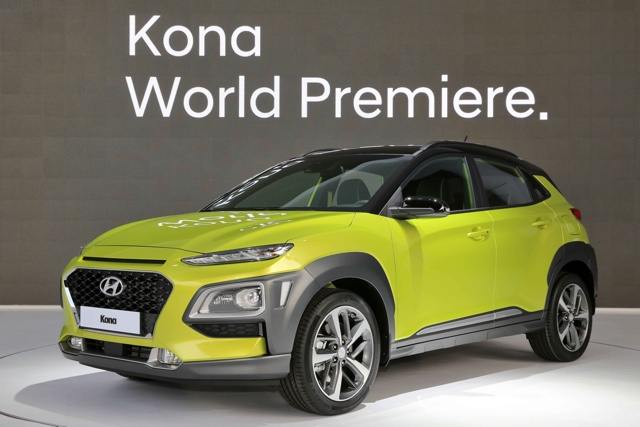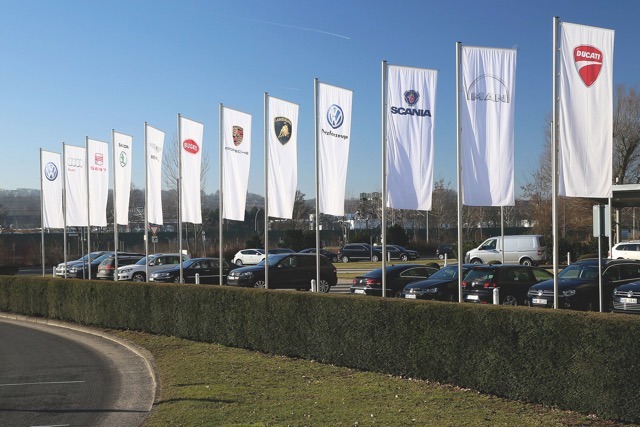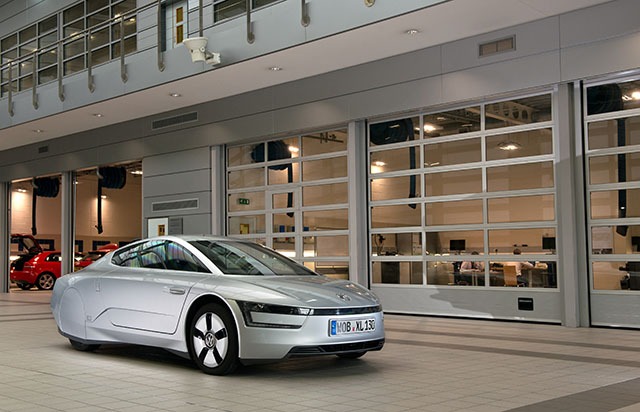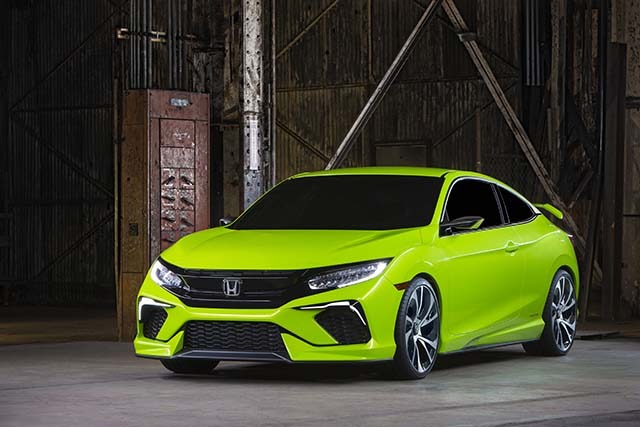Search the Community
Showing results for tags 'cut'.
-
In news that will likely not shock a lot of people, Toyota has dropped the Yaris Liftback for 2019. This was confirmed by Toyota spokesperson Nancy Hubbell to CarsDirect. No reason was given as to why the liftback variant was being dropped, but we have to assume falling sales were the key reason. In 2018, sales dropped 77.6 percent to 27,209 models - only 1,940 of those were the liftback. Toyota is keeping the sedan variant but has dropped the price to $16,380. CarsDirect speculates this might have been a tough decision based on fleet documents that list the 2019 Yaris Liftback production as "TBA" for a number of months after issuing order guides. Interestingly, Hubbell told CarsDirect that Toyota has an announcement concerning the 2020 Yaris at the New York Auto Show in April. Source: CarsDirect View full article
-
In news that will likely not shock a lot of people, Toyota has dropped the Yaris Liftback for 2019. This was confirmed by Toyota spokesperson Nancy Hubbell to CarsDirect. No reason was given as to why the liftback variant was being dropped, but we have to assume falling sales were the key reason. In 2018, sales dropped 77.6 percent to 27,209 models - only 1,940 of those were the liftback. Toyota is keeping the sedan variant but has dropped the price to $16,380. CarsDirect speculates this might have been a tough decision based on fleet documents that list the 2019 Yaris Liftback production as "TBA" for a number of months after issuing order guides. Interestingly, Hubbell told CarsDirect that Toyota has an announcement concerning the 2020 Yaris at the New York Auto Show in April. Source: CarsDirect
- 5 comments
-
A new year marks the beginning of the reduction of the federal tax credit for Tesla - from $7,500 down to $3,750. To counteract the reductions, Tesla has instituted a $2,000 price cut on all models. Here is how the pricing looks like, Model 3 $45,200, Mid-Range $52,200, Long Range $63,200, Performance Model S $77,200, 75D $95,200, 100D $134,200, P100D Model X $83,200, 75D $98,200, 100D $139,200 P100D This reduction comes on the same day that Tesla announced fourth quarter production numbers. The past few months saw Tesla making cuts in colors and equipment to help reach their goal of delivering 100,000 Model S and X vehicles by the end of this year - they narrowly missed it with 99,394 deliveries. For the Model 3, Tesla was able to deliver 145,846 vehicles in 2018. Source: Bloomberg, Tesla Tesla Q4 2018 Vehicle Production & Deliveries, Also Announcing $2,000 Price Reduction in US PALO ALTO, Calif., Jan. 02, 2019 (GLOBE NEWSWIRE) --In Q4, we produced and delivered at the rate of nearly 1,000 vehicles per day, setting new company records for both production and deliveries. Production in Q4 grew to 86,555 vehicles, 8% more than our prior all-time high in Q3. This included: 61,394 Model 3 vehicles, in line with our guidance and 15% more than Q3. 25,161 Model S and X vehicles, consistent with our long-term run rate of approximately 100,000 per year. Q4 deliveries grew to 90,700 vehicles, which was 8% more than our prior all time-high in Q3. This included 63,150 Model 3 (13% growth over Q3), 13,500 Model S, and 14,050 Model X vehicles. In 2018, we delivered a total of 245,240 vehicles: 145,846 Model 3 and 99,394 Model S and X. To put our growth into perspective, we delivered almost as many vehicles in 2018 as we did in all prior years combined. Our Q4 Model 3 deliveries were limited to mid- and higher-priced variants, cash/loan transactions, and North American customers only. More than three quarters of Model 3 orders in Q4 came from new customers, rather than reservation holders. There remain significant opportunities to continue to grow Model 3 sales by expanding to international markets, introducing lower-priced variants and offering leasing. International deliveries in Europe and China will start in February 2019. Expansion of Model 3 sales to other markets, including with a right-hand drive variant, will occur later in 2019. 1,010 Model 3 vehicles and 1,897 Model S and X vehicles were in transit to customers at the end of Q4, and will be delivered in early Q1 2019. Our inventory levels remain the smallest in the automotive industry, and we were able to reduce vehicles in transit to customers by significantly improving our logistics system in North America. Moving beyond the success of Q4, we are taking steps to partially absorb the reduction of the federal EV tax credit (which, as of January 1st, dropped from $7,500 to $3,750). Starting today, we are reducing the price of Model S, Model X and Model 3 vehicles in the U.S. by $2,000. Customers can apply to receive the $3,750 federal tax credit for new deliveries starting on January 1, 2019, and may also be eligible for several state and local electric vehicle and utility incentives, which range up to $4,000. Combined with the reduced costs of maintenance and of charging a Tesla versus paying for gas at the pump – which can result in up to $100 per month or more in savings – this means our vehicles are even more affordable than similarly priced gasoline vehicles. Tesla’s achievements in 2018 likely represent the biggest single-year growth in the history of the automotive industry. We started the year with a delivery run rate of about 120,000 vehicles per year and ended it at more than 350,000 vehicles per year – an increase of almost 3X. As a result, we’re starting to make a tangible impact on accelerating the world to sustainable energy. Additionally, 2018 was the first time in decades that an American car – the Model 3 – was the best-selling premium vehicle in the U.S. for the full year, with U.S. sales of Model 3 roughly double those of the runner up. We want to thank our customers, suppliers, investors, and especially our employees, who worked so hard to accomplish this. View full article
-
A new year marks the beginning of the reduction of the federal tax credit for Tesla - from $7,500 down to $3,750. To counteract the reductions, Tesla has instituted a $2,000 price cut on all models. Here is how the pricing looks like, Model 3 $45,200, Mid-Range $52,200, Long Range $63,200, Performance Model S $77,200, 75D $95,200, 100D $134,200, P100D Model X $83,200, 75D $98,200, 100D $139,200 P100D This reduction comes on the same day that Tesla announced fourth quarter production numbers. The past few months saw Tesla making cuts in colors and equipment to help reach their goal of delivering 100,000 Model S and X vehicles by the end of this year - they narrowly missed it with 99,394 deliveries. For the Model 3, Tesla was able to deliver 145,846 vehicles in 2018. Source: Bloomberg, Tesla Tesla Q4 2018 Vehicle Production & Deliveries, Also Announcing $2,000 Price Reduction in US PALO ALTO, Calif., Jan. 02, 2019 (GLOBE NEWSWIRE) --In Q4, we produced and delivered at the rate of nearly 1,000 vehicles per day, setting new company records for both production and deliveries. Production in Q4 grew to 86,555 vehicles, 8% more than our prior all-time high in Q3. This included: 61,394 Model 3 vehicles, in line with our guidance and 15% more than Q3. 25,161 Model S and X vehicles, consistent with our long-term run rate of approximately 100,000 per year. Q4 deliveries grew to 90,700 vehicles, which was 8% more than our prior all time-high in Q3. This included 63,150 Model 3 (13% growth over Q3), 13,500 Model S, and 14,050 Model X vehicles. In 2018, we delivered a total of 245,240 vehicles: 145,846 Model 3 and 99,394 Model S and X. To put our growth into perspective, we delivered almost as many vehicles in 2018 as we did in all prior years combined. Our Q4 Model 3 deliveries were limited to mid- and higher-priced variants, cash/loan transactions, and North American customers only. More than three quarters of Model 3 orders in Q4 came from new customers, rather than reservation holders. There remain significant opportunities to continue to grow Model 3 sales by expanding to international markets, introducing lower-priced variants and offering leasing. International deliveries in Europe and China will start in February 2019. Expansion of Model 3 sales to other markets, including with a right-hand drive variant, will occur later in 2019. 1,010 Model 3 vehicles and 1,897 Model S and X vehicles were in transit to customers at the end of Q4, and will be delivered in early Q1 2019. Our inventory levels remain the smallest in the automotive industry, and we were able to reduce vehicles in transit to customers by significantly improving our logistics system in North America. Moving beyond the success of Q4, we are taking steps to partially absorb the reduction of the federal EV tax credit (which, as of January 1st, dropped from $7,500 to $3,750). Starting today, we are reducing the price of Model S, Model X and Model 3 vehicles in the U.S. by $2,000. Customers can apply to receive the $3,750 federal tax credit for new deliveries starting on January 1, 2019, and may also be eligible for several state and local electric vehicle and utility incentives, which range up to $4,000. Combined with the reduced costs of maintenance and of charging a Tesla versus paying for gas at the pump – which can result in up to $100 per month or more in savings – this means our vehicles are even more affordable than similarly priced gasoline vehicles. Tesla’s achievements in 2018 likely represent the biggest single-year growth in the history of the automotive industry. We started the year with a delivery run rate of about 120,000 vehicles per year and ended it at more than 350,000 vehicles per year – an increase of almost 3X. As a result, we’re starting to make a tangible impact on accelerating the world to sustainable energy. Additionally, 2018 was the first time in decades that an American car – the Model 3 – was the best-selling premium vehicle in the U.S. for the full year, with U.S. sales of Model 3 roughly double those of the runner up. We want to thank our customers, suppliers, investors, and especially our employees, who worked so hard to accomplish this.
-
Opel is undergoing a major product overhaul as it begins to transition over from General Motors architectures to PSA Group. Some products will not make the change, however. Yesterday, Opel announced that the Adam city car, Cascada convertible, and the KARL city car will end production at the end of 2019. The company blames new emission rules for the canceling of these models, but some suspect the low-margin on these vehicles is what ultimately led to their demise. "In order to contribute to the CO2 compliance and to focus on high volume segments, the Opel ADAM, KARL and Cascada will not be replaced after the end of their life cycles, but will remain on sale until the end of 2019," the company said in a statement. This announcement has some wondering about the future of Buick's Cascada. A spokesman for the brand told Automotive News that Buick "not confirming anything at this point" regarding the brand's plans for the Cascada. Although, AN's Future Product Pipeline reports that the Buick version could be discontinued sooner than later. On the flipside, Opel will be launching eight all-new or refreshed vehicles beginning early next year. This will include a new Corsa subcompact and replacement for the Mokka X (what we know as the Buick Encore). Source: Reuters, Automotive News (Subscription Required), Opel Opel to Launch Eight All-New or Refreshed Models by 2020 Stronger customer orientation and dealer performance Focus on high volume and high growth segments with three key launches by 2020: all-new Corsa, Vivaro and Mokka X successor Ensure CO2 compliance with state-of-the-art technology: four electrified vehicles by end of 2020; 100 percent electrification by 2024; further improved combustion engines Rüsselsheim. Opel is continuing to execute the PACE! plan product offensive to meet customer needs and ensure compliance with the drastic Europe-wide CO2 guidelines which become effective in 2020. The future portfolio will ensure a sustainable, successful future for both the company and its dealer network. From early 2019 to the end of 2020, the company will launch eight all-new or refreshed models, investing primarily in high-volume and profitable segments. By then, Opel will be offering one of the newest portfolios of all volume manufacturers. With its PACE! plan, Opel has clearly committed to bringing at least one all-new model onto the market every year. In 2019 alone, Opel will launch the new generation of the bestselling Corsa and the successor to the successful Vivaro as LCV and passenger car variants. Additional variants and equipment versions of the Combo will also be on sale, thus significantly renewing the LCV portfolio. The successor to the hugely popular Opel Mokka X will follow in 2020 and will play a pivotal role for the strategy to expand the proportion of the company’s SUV sales from 25 to 40 percent by 2021. “Opel goes electric” was one of the commitments made by the company in November 2017 as part of its PACE! plan. Order books for both the all-electric new five-seater Corsa and the Grandland X PHEV which will be produced in Eisenach will be open by the summer of 2019. By the end of 2020, Opel will have a total of four electrified models on offer, providing a lot of driving pleasure and transforming e-car demand from niche to volume. By 2024, there will be an electrified version of every Opel model. Opel will make highly interesting offers, both technically and economically, and will democratise electro-mobility while further improving its combustion engines. In order to contribute to the CO2 compliance and to focus on high volume segments, the Opel ADAM, KARL and Cascada will not be replaced after the end of their life cycles, but will remain on sale until the end of 2019. With the new portfolio, Opel will continue to cover around 80 percent of the mainstream market volume in 2020 – with significantly higher efficiency and customer-orientation while simultaneously reducing complexity. “In a context of drastic CO2 norms, it’s our responsibility to shape a sustainable future for our company and our dealers with a highly competitive portfolio for passenger and light commercial vehicles. Opel will offer fun to drive and emotionally designed models including highly competitive light commercial vehicles such as the new Combo and Vivaro. The customers will benefit from the broad introduction of innovative technologies and affordable electrification,” said Opel CEO Michael Lohscheller. “The most recent awards – like the IVOTY 2019 for our Combo – demonstrate that we are on the right path.” The German manufacturer with almost 120 years of automotive tradition is leveraging Groupe PSA platforms and innovative propulsion technologies for all new models. Opel has impressively demonstrated its efficiency this year: the entire portfolio was and is fully available from dealers in time for the transition to the new Worldwide Harmonized Light Vehicles Test Procedure standard (WLTP). Moreover, Opel is already fully ready for the new Euro 6d-TEMP emissions standard and offers 127 passenger car models that meet the requirements which will come into effect for all new registrations in September 2019. “Our commitment to Euro 6d-TEMP is part of our strategy to become a leader in the reduction of vehicle emissions and a key pillar of our customer-centric approach. Whoever buys a new Opel now must not fear a city driving ban from today’s perspective,” said Lohscheller.
-
Opel is undergoing a major product overhaul as it begins to transition over from General Motors architectures to PSA Group. Some products will not make the change, however. Yesterday, Opel announced that the Adam city car, Cascada convertible, and the KARL city car will end production at the end of 2019. The company blames new emission rules for the canceling of these models, but some suspect the low-margin on these vehicles is what ultimately led to their demise. "In order to contribute to the CO2 compliance and to focus on high volume segments, the Opel ADAM, KARL and Cascada will not be replaced after the end of their life cycles, but will remain on sale until the end of 2019," the company said in a statement. This announcement has some wondering about the future of Buick's Cascada. A spokesman for the brand told Automotive News that Buick "not confirming anything at this point" regarding the brand's plans for the Cascada. Although, AN's Future Product Pipeline reports that the Buick version could be discontinued sooner than later. On the flipside, Opel will be launching eight all-new or refreshed vehicles beginning early next year. This will include a new Corsa subcompact and replacement for the Mokka X (what we know as the Buick Encore). Source: Reuters, Automotive News (Subscription Required), Opel Opel to Launch Eight All-New or Refreshed Models by 2020 Stronger customer orientation and dealer performance Focus on high volume and high growth segments with three key launches by 2020: all-new Corsa, Vivaro and Mokka X successor Ensure CO2 compliance with state-of-the-art technology: four electrified vehicles by end of 2020; 100 percent electrification by 2024; further improved combustion engines Rüsselsheim. Opel is continuing to execute the PACE! plan product offensive to meet customer needs and ensure compliance with the drastic Europe-wide CO2 guidelines which become effective in 2020. The future portfolio will ensure a sustainable, successful future for both the company and its dealer network. From early 2019 to the end of 2020, the company will launch eight all-new or refreshed models, investing primarily in high-volume and profitable segments. By then, Opel will be offering one of the newest portfolios of all volume manufacturers. With its PACE! plan, Opel has clearly committed to bringing at least one all-new model onto the market every year. In 2019 alone, Opel will launch the new generation of the bestselling Corsa and the successor to the successful Vivaro as LCV and passenger car variants. Additional variants and equipment versions of the Combo will also be on sale, thus significantly renewing the LCV portfolio. The successor to the hugely popular Opel Mokka X will follow in 2020 and will play a pivotal role for the strategy to expand the proportion of the company’s SUV sales from 25 to 40 percent by 2021. “Opel goes electric” was one of the commitments made by the company in November 2017 as part of its PACE! plan. Order books for both the all-electric new five-seater Corsa and the Grandland X PHEV which will be produced in Eisenach will be open by the summer of 2019. By the end of 2020, Opel will have a total of four electrified models on offer, providing a lot of driving pleasure and transforming e-car demand from niche to volume. By 2024, there will be an electrified version of every Opel model. Opel will make highly interesting offers, both technically and economically, and will democratise electro-mobility while further improving its combustion engines. In order to contribute to the CO2 compliance and to focus on high volume segments, the Opel ADAM, KARL and Cascada will not be replaced after the end of their life cycles, but will remain on sale until the end of 2019. With the new portfolio, Opel will continue to cover around 80 percent of the mainstream market volume in 2020 – with significantly higher efficiency and customer-orientation while simultaneously reducing complexity. “In a context of drastic CO2 norms, it’s our responsibility to shape a sustainable future for our company and our dealers with a highly competitive portfolio for passenger and light commercial vehicles. Opel will offer fun to drive and emotionally designed models including highly competitive light commercial vehicles such as the new Combo and Vivaro. The customers will benefit from the broad introduction of innovative technologies and affordable electrification,” said Opel CEO Michael Lohscheller. “The most recent awards – like the IVOTY 2019 for our Combo – demonstrate that we are on the right path.” The German manufacturer with almost 120 years of automotive tradition is leveraging Groupe PSA platforms and innovative propulsion technologies for all new models. Opel has impressively demonstrated its efficiency this year: the entire portfolio was and is fully available from dealers in time for the transition to the new Worldwide Harmonized Light Vehicles Test Procedure standard (WLTP). Moreover, Opel is already fully ready for the new Euro 6d-TEMP emissions standard and offers 127 passenger car models that meet the requirements which will come into effect for all new registrations in September 2019. “Our commitment to Euro 6d-TEMP is part of our strategy to become a leader in the reduction of vehicle emissions and a key pillar of our customer-centric approach. Whoever buys a new Opel now must not fear a city driving ban from today’s perspective,” said Lohscheller. View full article
-
The past decade has seen BMW exploring new niches in the marketplace with such models as the X6 and 5-Series GT. Some of them had paid off, while others haven't. The 3-Series GT falls into the latter. Following in the footsteps of the 5-Series GT (now 6-Series GT), the 3-Series offered a higher seating position and extra space for those who didn't want and SUV. But it never found an audience and BMW has decided to kill it off. “When we did the GT we saw that in demographic change people want to sit a little more upright. But then you saw X1 and X3 you can sit upright and you feel younger. So this segment is under pressure from SUVs, which are having no disadvantage in fuel consumption or in ride and handling,” said Klaus Fröhlich, BMW's r&d chief to Motoring. Last May, we reported that the next 3-Series GT would have moved over to the 4-Series lineup - similar to what BMW did to the 5-Series GT. But it seems those plans are off the table. Its unclear at the moment when BMW could end production of the 3-Series GT. Source: Motoring
- 6 comments
-
- 3-series gt
- bmw
-
(and 3 more)
Tagged with:
-
The past decade has seen BMW exploring new niches in the marketplace with such models as the X6 and 5-Series GT. Some of them had paid off, while others haven't. The 3-Series GT falls into the latter. Following in the footsteps of the 5-Series GT (now 6-Series GT), the 3-Series offered a higher seating position and extra space for those who didn't want and SUV. But it never found an audience and BMW has decided to kill it off. “When we did the GT we saw that in demographic change people want to sit a little more upright. But then you saw X1 and X3 you can sit upright and you feel younger. So this segment is under pressure from SUVs, which are having no disadvantage in fuel consumption or in ride and handling,” said Klaus Fröhlich, BMW's r&d chief to Motoring. Last May, we reported that the next 3-Series GT would have moved over to the 4-Series lineup - similar to what BMW did to the 5-Series GT. But it seems those plans are off the table. Its unclear at the moment when BMW could end production of the 3-Series GT. Source: Motoring View full article
- 6 replies
-
- 3-series gt
- bmw
-
(and 3 more)
Tagged with:
-
If you're planning on picking up a 2019 Volkswagen Passat, then you might be disappointed by the limited amount on configurations on offer. The Car Connection reports that Volkswagen will be cutting down the 2019 Passat lineup to just two models - the Wolfsburg Edition and SE R-Line. Wolfsburg Edition: 17-inch alloy wheels, push-button start, automatic emergency braking, and blind-spot monitoring as standard. A sunroof and 18-inch wheels are optional. SE R-Line: LED lighting, adaptive cruise control, parking sensors, lane keep assist, navigation, and Fender audio system. Along with the drop in trims, the 280 horsepower V6 will be going away in 2019. This leaves the turbo 2.0L four-cylinder and six-speed automatic as the sole powertrain choice. We're not sure as to why Volkswagen is slicing up the Passat lineup. Our two possible guesses is the declining sales of midsize sedans or Volkswagen readying a next-generation Passat that could arrive as early as 2020. No word on pricing or on-sale date. Source: The Car Connection
-
If you're planning on picking up a 2019 Volkswagen Passat, then you might be disappointed by the limited amount on configurations on offer. The Car Connection reports that Volkswagen will be cutting down the 2019 Passat lineup to just two models - the Wolfsburg Edition and SE R-Line. Wolfsburg Edition: 17-inch alloy wheels, push-button start, automatic emergency braking, and blind-spot monitoring as standard. A sunroof and 18-inch wheels are optional. SE R-Line: LED lighting, adaptive cruise control, parking sensors, lane keep assist, navigation, and Fender audio system. Along with the drop in trims, the 280 horsepower V6 will be going away in 2019. This leaves the turbo 2.0L four-cylinder and six-speed automatic as the sole powertrain choice. We're not sure as to why Volkswagen is slicing up the Passat lineup. Our two possible guesses is the declining sales of midsize sedans or Volkswagen readying a next-generation Passat that could arrive as early as 2020. No word on pricing or on-sale date. Source: The Car Connection View full article
-
Like many countries, China offers various incentives to spur the sales of electric vehicles. But a report from Bloomberg says the Chinese government is considering reducing various subsidies beginning next year. According to sources, the government is considering cutting the average incentive by more than a third from where they currently stand. Also up for consideration is incentives being eligible on models that can travel at least 200 kilometers (about 125 miles) on a single charge. Why? The government wants automakers to keep innovating by making EVs cheaper and go much further on a charge. “China is switching away from carrots. The government wants to ensure automakers will launch models that would be appealing to consumers hence setting subsidies contingent on minimum driving range requirements,” said Ali Izadi-Najafabadi, an analyst at Bloomberg NEF. In 2017, the Chinese government spent 6.64 billion yuan (about a billion dollars) on various subsidies for electric vehicles. But this year saw the government begin to cut various incentives. For example, cars that have a driving range of less than 300 kilometers (about 186 miles) saw their incentives reduced. “Government policy has a huge impact over the new-energy vehicle sector and every adjustment made on the policy front over the next two years will result in tremendous changes in the industry,” Li Yixiu, sales chief for Beijing Electric Vehicle Company earlier this month. "We believe there isn’t a chance for carmakers to raise prices to make up for the reduction of government fundings. Instead, we have to come up with competitive new products and services to respond.” Source: Bloomberg View full article
- 14 replies
-
Like many countries, China offers various incentives to spur the sales of electric vehicles. But a report from Bloomberg says the Chinese government is considering reducing various subsidies beginning next year. According to sources, the government is considering cutting the average incentive by more than a third from where they currently stand. Also up for consideration is incentives being eligible on models that can travel at least 200 kilometers (about 125 miles) on a single charge. Why? The government wants automakers to keep innovating by making EVs cheaper and go much further on a charge. “China is switching away from carrots. The government wants to ensure automakers will launch models that would be appealing to consumers hence setting subsidies contingent on minimum driving range requirements,” said Ali Izadi-Najafabadi, an analyst at Bloomberg NEF. In 2017, the Chinese government spent 6.64 billion yuan (about a billion dollars) on various subsidies for electric vehicles. But this year saw the government begin to cut various incentives. For example, cars that have a driving range of less than 300 kilometers (about 186 miles) saw their incentives reduced. “Government policy has a huge impact over the new-energy vehicle sector and every adjustment made on the policy front over the next two years will result in tremendous changes in the industry,” Li Yixiu, sales chief for Beijing Electric Vehicle Company earlier this month. "We believe there isn’t a chance for carmakers to raise prices to make up for the reduction of government fundings. Instead, we have to come up with competitive new products and services to respond.” Source: Bloomberg
- 14 comments
-
Nissan's goal in the U.S. for quite some time was increasing its market share. To do this, the company piled on the incentives and sold more vehicles to rental car fleets. While fine in the short-term, the long-term effects would hurt profitability and brand image. This isn't helped by sales declining 6.5 percent this year and a growing supply of vehicles on dealers - Kelly Blue Book reports an 88-day supply of Nissan vehicles. Nissan is changing its plan for the U.S. Back at the 2018 NADA Show in April, Nissan's U.S. sales chief Dan Mohnke told dealers the company would focus on boosting profitability by reducing inventory. One way to do that is cutting back on production. The Nikkei Asian Review reports Nissan is slashing production as much as 20% at their North American plants. The cuts are already taking place at Nissan's two plants in the U.S. (Canton and Smyrna, TN) and three in Mexico. No layoffs are expected, instead, workers will have an extra day or two off of work. The cuts are expected to end in the fall when production of the next-generation Altima kicks off. It is expected that the production cut will drop Nissan's U.S. sales for the year by three percent. Source: Nikkei Asian Review View full article
-

Nissan To Cut Production In North America By As Much As 20 Percent
William Maley posted an article in Nissan
Nissan's goal in the U.S. for quite some time was increasing its market share. To do this, the company piled on the incentives and sold more vehicles to rental car fleets. While fine in the short-term, the long-term effects would hurt profitability and brand image. This isn't helped by sales declining 6.5 percent this year and a growing supply of vehicles on dealers - Kelly Blue Book reports an 88-day supply of Nissan vehicles. Nissan is changing its plan for the U.S. Back at the 2018 NADA Show in April, Nissan's U.S. sales chief Dan Mohnke told dealers the company would focus on boosting profitability by reducing inventory. One way to do that is cutting back on production. The Nikkei Asian Review reports Nissan is slashing production as much as 20% at their North American plants. The cuts are already taking place at Nissan's two plants in the U.S. (Canton and Smyrna, TN) and three in Mexico. No layoffs are expected, instead, workers will have an extra day or two off of work. The cuts are expected to end in the fall when production of the next-generation Altima kicks off. It is expected that the production cut will drop Nissan's U.S. sales for the year by three percent. Source: Nikkei Asian Review -
Ford is serious about cutting costs and that means cars will be cut. During the company's first-quarter earnings, it was announced that Ford would be killing off the Fiesta, Focus Sedan/Hatch, Fusion, and Taurus in North America. The only vehicles that will remain are the Mustang and the upcoming Focus Active in 2019. This will save Ford $11.5 billion and up their cost-cutting goal to $25.5 billion by 2022. This is a sizeable increase from $14 billion projected by CEO Jim Hackett in October. “Everything is on the table. We can exit products (and) markets. We will do that. That work (started in October) has really gained traction. We have looked at every single part of the business. It’s a very complex endeavor. We are determined to turn this business around right throughout the whole company. There’s more work that’s underway,” said Ford Chief Financial Officer Bob Shanks. The move to reduce Ford's passenger car lineup is not shocking. Sales of Ford's passenger cars have been tanking for the past couple of years as trucks/SUVs have taken off. We've also be reporting on the death of Ford's car lineup in the rumorpile within the past year. It is unclear the timeframe as to when the various models will end production for North America. Our guess would be Taurus, Fiesta, Focus, and Fusion. Ford is also not planning "next generations of traditional Ford sedans for North America.” Instead, the company will focus on what it calls “white space” silhouette vehicles - models hat combine attributes from cars and utility vehicles (A.K.A. crossovers) Also in the cards are hybrid powertrains for various models and 16 electric vehicles by 2022. By 2020, the company expects 90 percent of their North American lineup will be comprised of pickups, SUVs, and commercial vehicles. For the time being, other markets will continue to get the Fiesta, Focus, Fusion, and Taurus. One item that is still up in the air is what will happen to the Lincoln models that share platforms - the Continental and MKZ. Source: Ford, Automotive News (Subscription Required), Bloomberg, The Detroit News
-
- cut
- end of the road
- (and 6 more)
-
Ford is serious about cutting costs and that means cars will be cut. During the company's first-quarter earnings, it was announced that Ford would be killing off the Fiesta, Focus Sedan/Hatch, Fusion, and Taurus in North America. The only vehicles that will remain are the Mustang and the upcoming Focus Active in 2019. This will save Ford $11.5 billion and up their cost-cutting goal to $25.5 billion by 2022. This is a sizeable increase from $14 billion projected by CEO Jim Hackett in October. “Everything is on the table. We can exit products (and) markets. We will do that. That work (started in October) has really gained traction. We have looked at every single part of the business. It’s a very complex endeavor. We are determined to turn this business around right throughout the whole company. There’s more work that’s underway,” said Ford Chief Financial Officer Bob Shanks. The move to reduce Ford's passenger car lineup is not shocking. Sales of Ford's passenger cars have been tanking for the past couple of years as trucks/SUVs have taken off. We've also be reporting on the death of Ford's car lineup in the rumorpile within the past year. It is unclear the timeframe as to when the various models will end production for North America. Our guess would be Taurus, Fiesta, Focus, and Fusion. Ford is also not planning "next generations of traditional Ford sedans for North America.” Instead, the company will focus on what it calls “white space” silhouette vehicles - models hat combine attributes from cars and utility vehicles (A.K.A. crossovers) Also in the cards are hybrid powertrains for various models and 16 electric vehicles by 2022. By 2020, the company expects 90 percent of their North American lineup will be comprised of pickups, SUVs, and commercial vehicles. For the time being, other markets will continue to get the Fiesta, Focus, Fusion, and Taurus. One item that is still up in the air is what will happen to the Lincoln models that share platforms - the Continental and MKZ. Source: Ford, Automotive News (Subscription Required), Bloomberg, The Detroit News View full article
-
- cut
- end of the road
- (and 6 more)
-
The compact crossover arena has become highly competitive in the past couple of years and automakers are pulling all of the stops to draw customers into their showroom. Volkswagen is no exception. According to Automotive News, Volkswagen told its dealers that it would be cutting the price on several trims of Tiguan effective immediately. The price cuts are as followed, Tiguan S: $600 Tiguan SE: $2,180 Tiguan SEL: $1,460 This brings the base prices down to $25,495 for the S, $27,650 for the SE, and $31,990 for the SEL. Note: These prices are for the FWD models, AWD models will see the same price cut. Hinrich Woebcken, CEO of Volkswagen of America told Automotive News that he wants to see Volkswagen become "more of a mass-market automaker in the U.S." To do this, Volkswagen needed to price their vehicles more competitively. Hence why the Tiguan saw a price cut. Source: Automotive News (Subscription Required) View full article
-
The compact crossover arena has become highly competitive in the past couple of years and automakers are pulling all of the stops to draw customers into their showroom. Volkswagen is no exception. According to Automotive News, Volkswagen told its dealers that it would be cutting the price on several trims of Tiguan effective immediately. The price cuts are as followed, Tiguan S: $600 Tiguan SE: $2,180 Tiguan SEL: $1,460 This brings the base prices down to $25,495 for the S, $27,650 for the SE, and $31,990 for the SEL. Note: These prices are for the FWD models, AWD models will see the same price cut. Hinrich Woebcken, CEO of Volkswagen of America told Automotive News that he wants to see Volkswagen become "more of a mass-market automaker in the U.S." To do this, Volkswagen needed to price their vehicles more competitively. Hence why the Tiguan saw a price cut. Source: Automotive News (Subscription Required)
-
Automakers know they have to stay on top of changing trends to be competitive or they'll end up behind the pack. That is currently the case with Hyundai as they are playing catch up to meet the growing demand for crossovers. But the company is readying an ambitious plan that will see their product design cycles cut in half. Luc Donckerwolke, senior vice president of design for Hyundai and Genesis tells Automotive News that he wants to cut the time that it takes from designing to production from about three years today to as little as a year and a half. "As life cycles get shorter, they will get drastically shorter. I have no doubt design can be shortened by half," said Donckerwolke. To help with this plan, Hyundai has opened a new 330,000 square feet design studio at the company's Namyang R&D Center. The new studio is more than double the size of the old one and will allow designers for both Hyundai and Genesis to work on 25 projects at the same time. According to Donckerwolke, the studio is responsible for about 65 projects. The new studio is said to shave off 30 percent of the typical design cycle. While Hyundai and Genesis will share the building, designers for the two brands will be separated to keep influence from one another to a minimum. Source: Automotive News (Subscription Required)
- 8 comments
-
- cut
- design cycle
-
(and 3 more)
Tagged with:
-
Automakers know they have to stay on top of changing trends to be competitive or they'll end up behind the pack. That is currently the case with Hyundai as they are playing catch up to meet the growing demand for crossovers. But the company is readying an ambitious plan that will see their product design cycles cut in half. Luc Donckerwolke, senior vice president of design for Hyundai and Genesis tells Automotive News that he wants to cut the time that it takes from designing to production from about three years today to as little as a year and a half. "As life cycles get shorter, they will get drastically shorter. I have no doubt design can be shortened by half," said Donckerwolke. To help with this plan, Hyundai has opened a new 330,000 square feet design studio at the company's Namyang R&D Center. The new studio is more than double the size of the old one and will allow designers for both Hyundai and Genesis to work on 25 projects at the same time. According to Donckerwolke, the studio is responsible for about 65 projects. The new studio is said to shave off 30 percent of the typical design cycle. While Hyundai and Genesis will share the building, designers for the two brands will be separated to keep influence from one another to a minimum. Source: Automotive News (Subscription Required) View full article
- 8 replies
-
- cut
- design cycle
-
(and 3 more)
Tagged with:
-

Rumorpile: Volkswagen Considers Trimming Their Worldwide Lineup
William Maley posted an article in Volkswagen
How many models does the entire Volkswagen group sell around the world? 75? 125? How about 340 models. No that isn't a misprint. According to German business paper Handelsblatt, that is the amount all of the brands of the German automaker build. CEO Matthias Müller believes that is too many. "The total number of our today around 340 model variants, we are in the course of reducing," Volkswagen CEO Matthias Müller at a press conference last week. But how many models are going on the chopping block? Sources tell Handelsblatt that 40 plus models will be cut. "A decision on how many models will be phased out or ceased has not been taken yet," said a Volkswagen spokesman to Reuters when asked for comment. Source: Handelsblatt (Subscription Required) Reuters- 3 comments
-
- 40 Plus Models
- Cut
- (and 5 more)
-
How many models does the entire Volkswagen group sell around the world? 75? 125? How about 340 models. No that isn't a misprint. According to German business paper Handelsblatt, that is the amount all of the brands of the German automaker build. CEO Matthias Müller believes that is too many. "The total number of our today around 340 model variants, we are in the course of reducing," Volkswagen CEO Matthias Müller at a press conference last week. But how many models are going on the chopping block? Sources tell Handelsblatt that 40 plus models will be cut. "A decision on how many models will be phased out or ceased has not been taken yet," said a Volkswagen spokesman to Reuters when asked for comment. Source: Handelsblatt (Subscription Required) Reuters View full article
- 3 replies
-
- 40 Plus Models
- Cut
- (and 5 more)
-
Volkswagen CEO Matthias Mueller told a group of 20,000 employees today in Germany that the company will be cancelling and delaying a number of projects in light of the diesel emission scandal. "Therefore we are putting all planned investments under review. What is not urgently needed will be scrapped or delayed. And therefore we will adjust our efficiency program. I will be very open: this won't be painless," said Muller. Fixing around 11 million vehicles around the world that are affected by the rigged software is a costly prospect for Volkswagen. Muller says the $7.29 billion set aside for repairs will not be enough to pay for fines and lawsuits. Volkswagen has been criticized for being an “incredibly inefficient” company. Last year, the automaker had set aside $17.4 billion research and development. That is higher than what Ford and General Motors spent on r&d combined last year. “Where’s the innovation? Obviously not in diesel engines. There’s a culture of spending and a lack of focus on efficiency in favor of striving to be bigger,” said Arndt Ellinghorst, an analyst with Evercore ISI. Source: Bloomberg
-
Volkswagen CEO Matthias Mueller told a group of 20,000 employees today in Germany that the company will be cancelling and delaying a number of projects in light of the diesel emission scandal. "Therefore we are putting all planned investments under review. What is not urgently needed will be scrapped or delayed. And therefore we will adjust our efficiency program. I will be very open: this won't be painless," said Muller. Fixing around 11 million vehicles around the world that are affected by the rigged software is a costly prospect for Volkswagen. Muller says the $7.29 billion set aside for repairs will not be enough to pay for fines and lawsuits. Volkswagen has been criticized for being an “incredibly inefficient” company. Last year, the automaker had set aside $17.4 billion research and development. That is higher than what Ford and General Motors spent on r&d combined last year. “Where’s the innovation? Obviously not in diesel engines. There’s a culture of spending and a lack of focus on efficiency in favor of striving to be bigger,” said Arndt Ellinghorst, an analyst with Evercore ISI. Source: Bloomberg View full article
-
Changes are afoot at Honda as they get ready for a massive product overhaul coming in the next few years. Autoblog reports that at the end of 2015 model year, the Civic Hybrid and Natural Gas models will be no more due to customer preferences changing. "These moves will allow greater focus on Civic's sporty new driving character," said John Mendel, Honda executive vice president and head of US automotive operations. The new Civic will go on sale sometime later this year in sedan, coupe, and hatchback forms. The Type-R which was announced to come to the U.S. sometime later has been given an arrival date of 2017. Source: Autoblog
- 16 comments


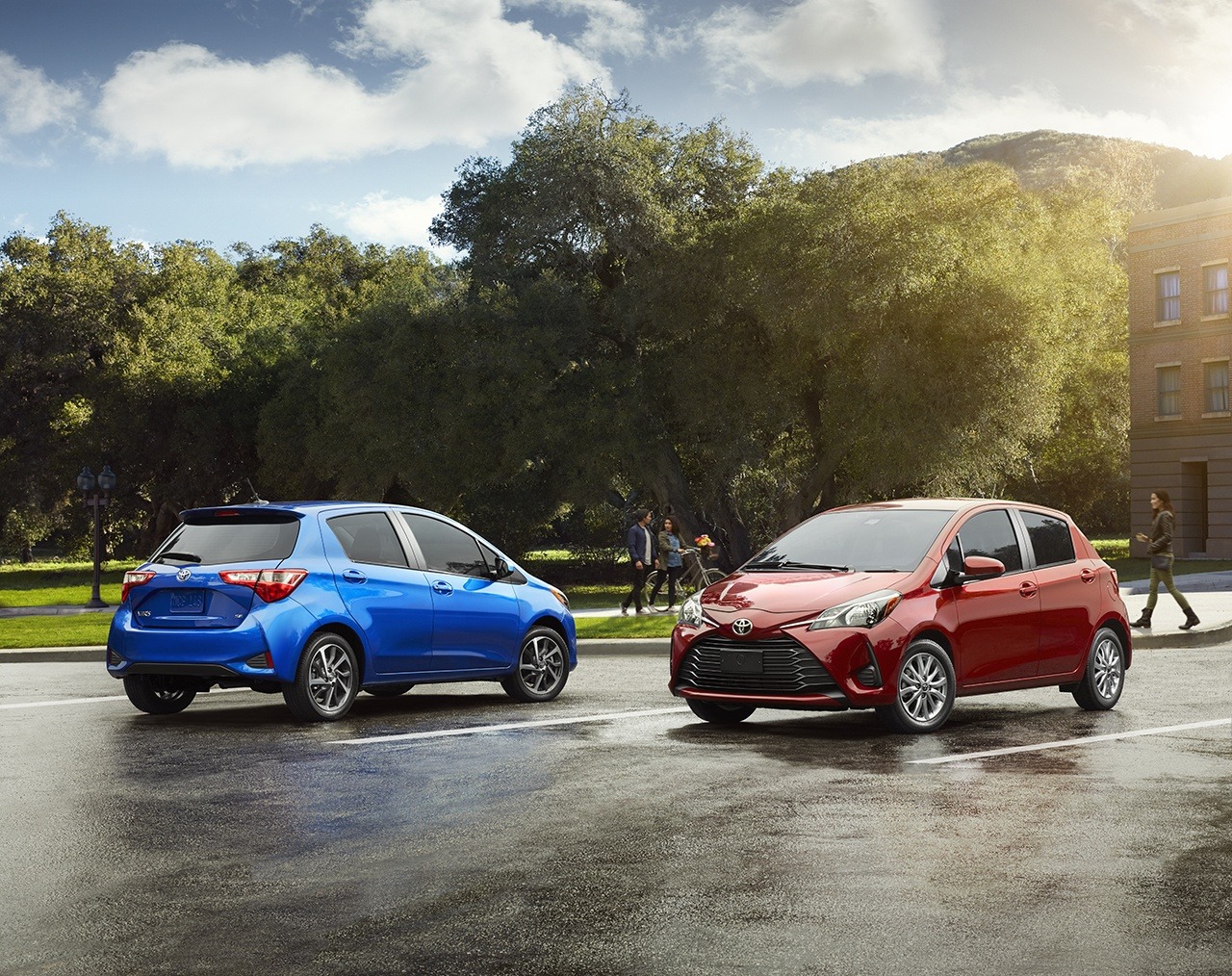
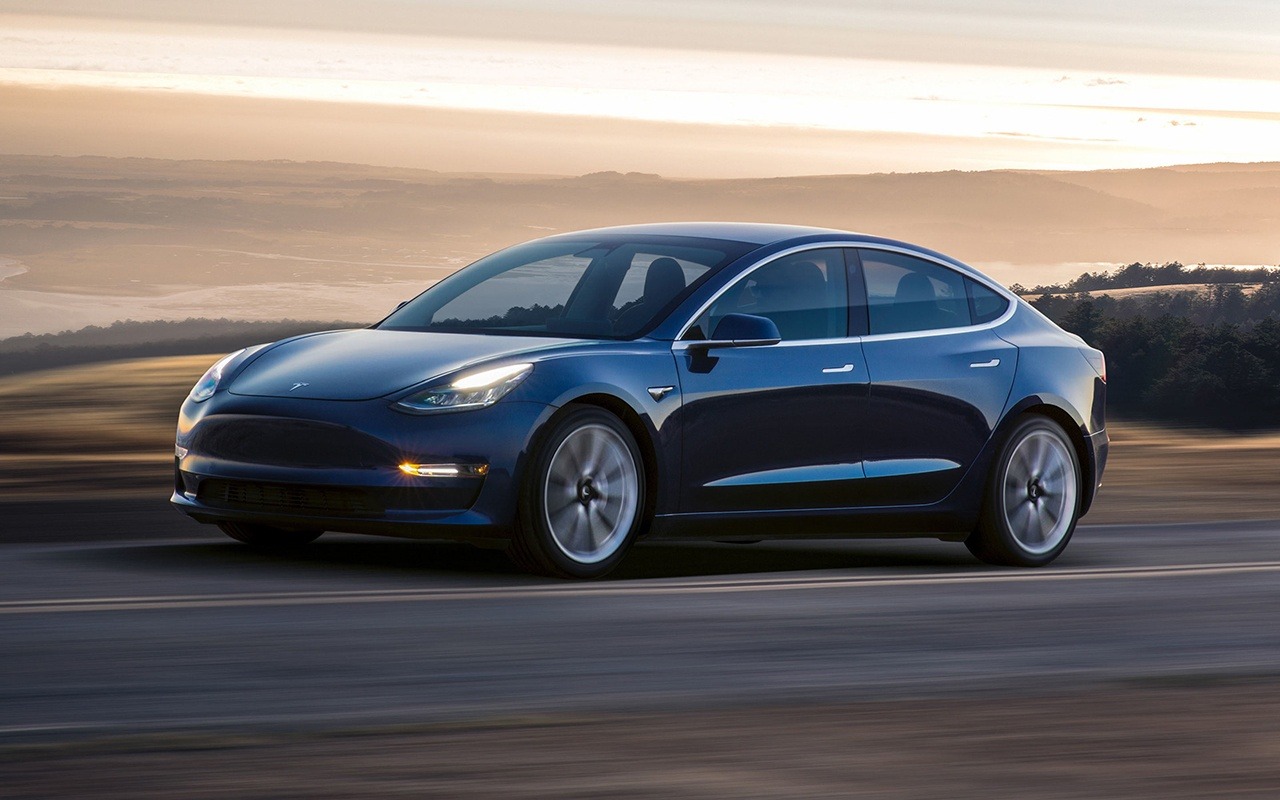
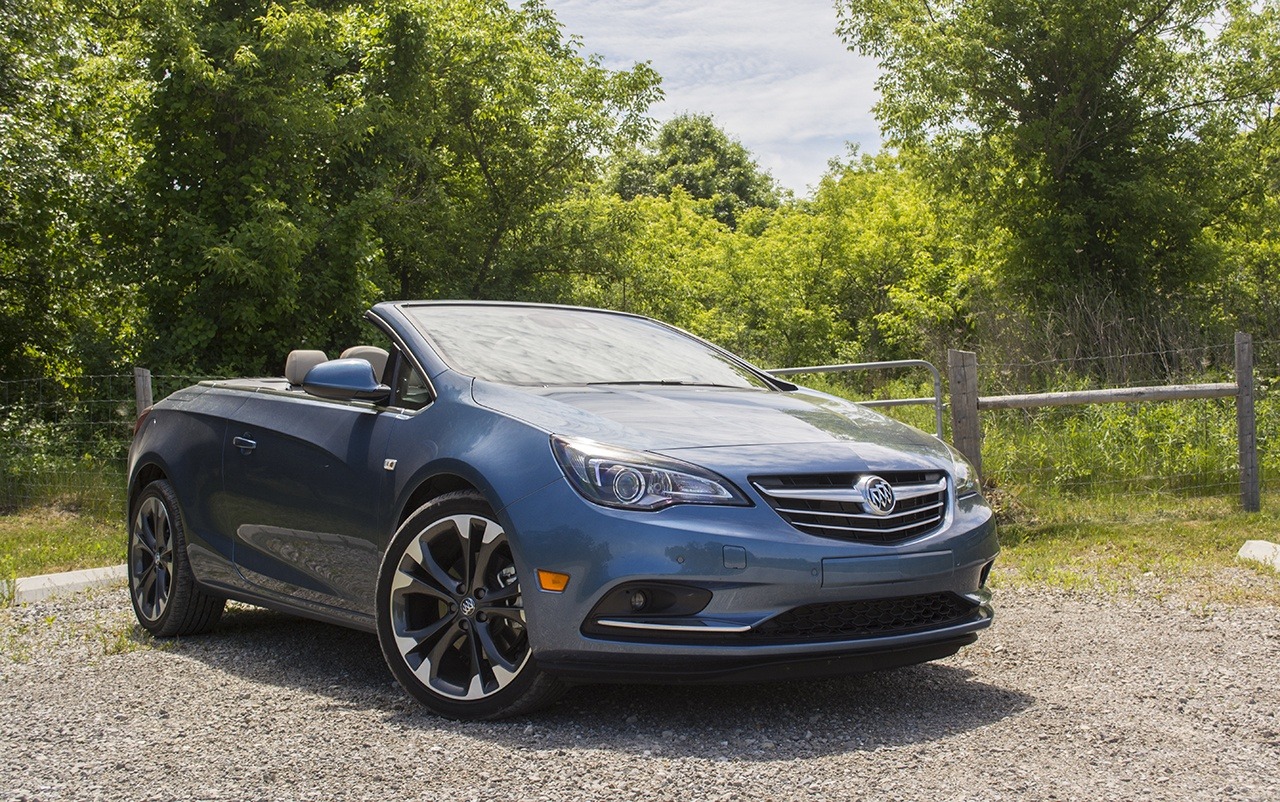
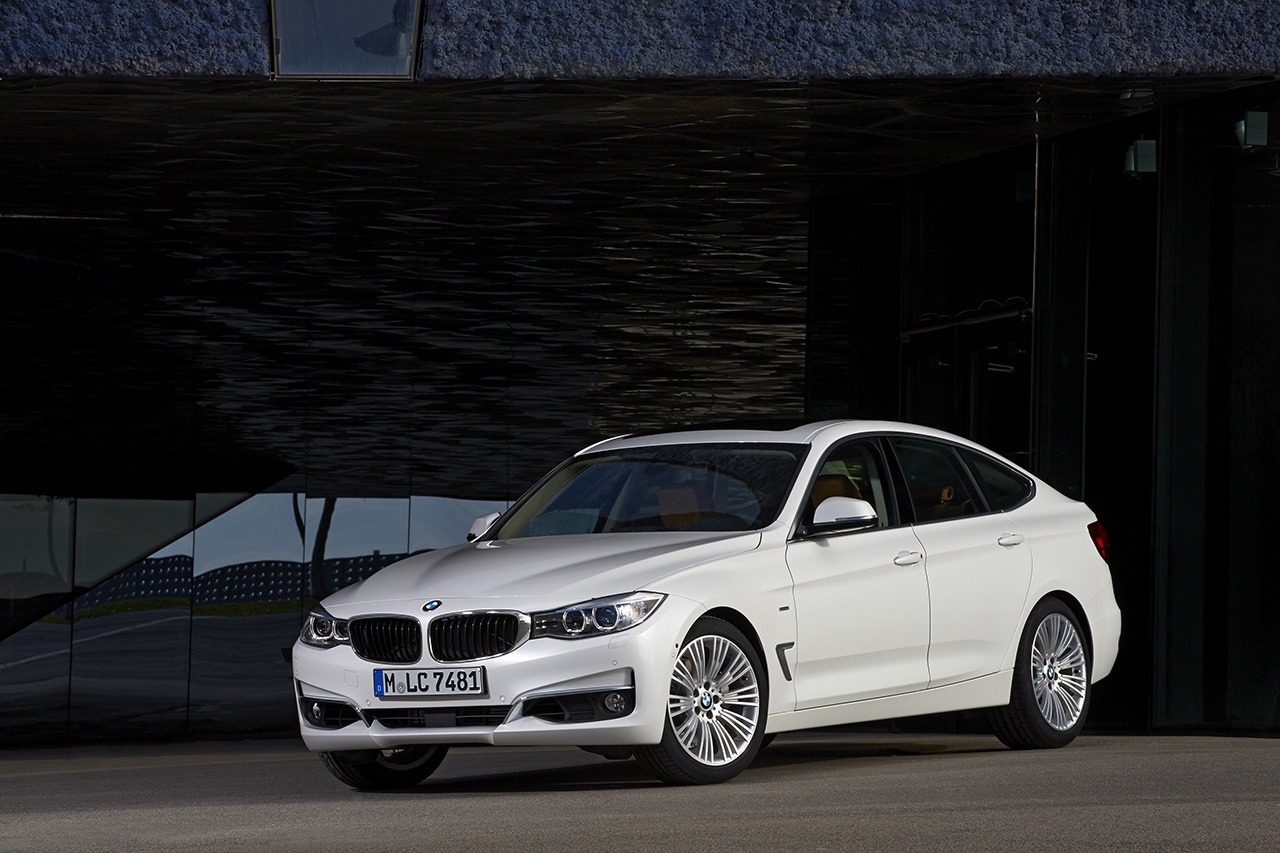
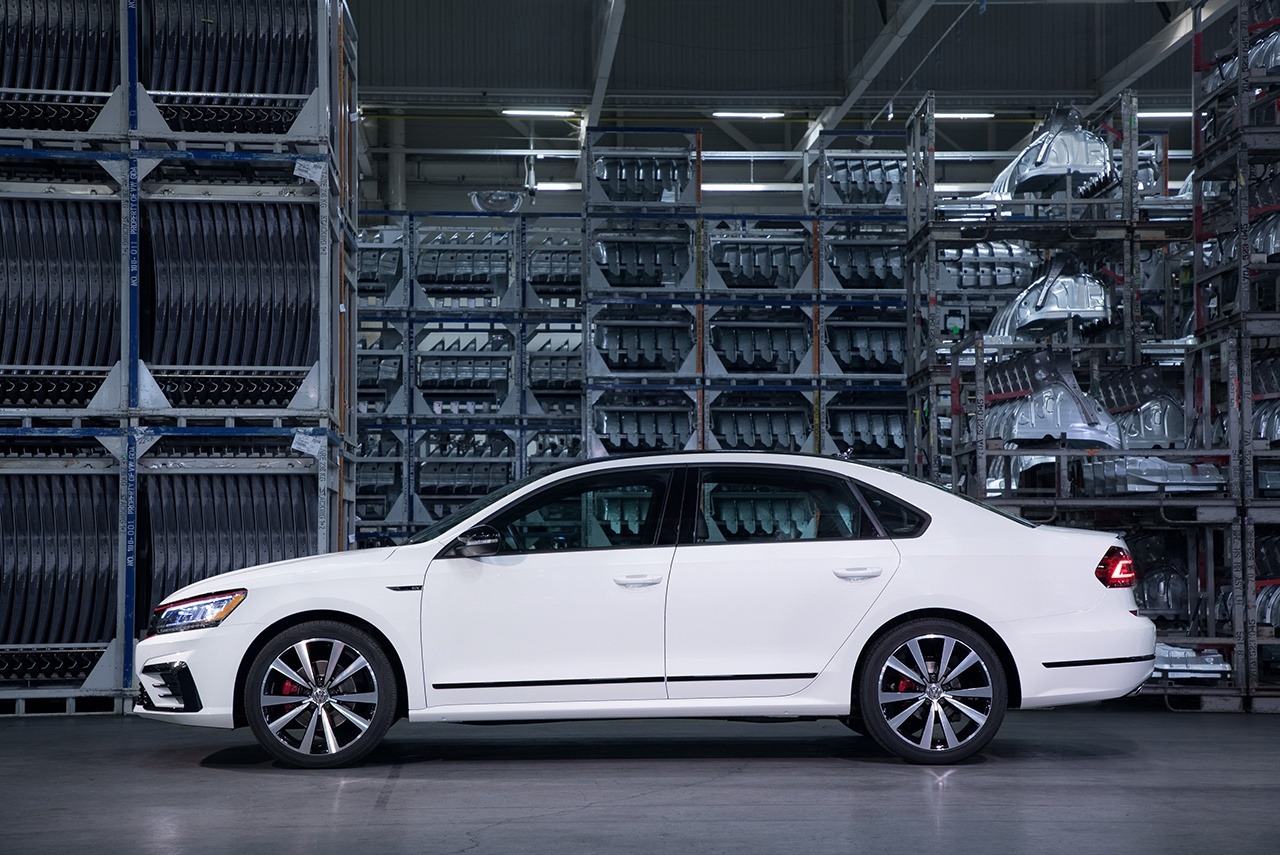
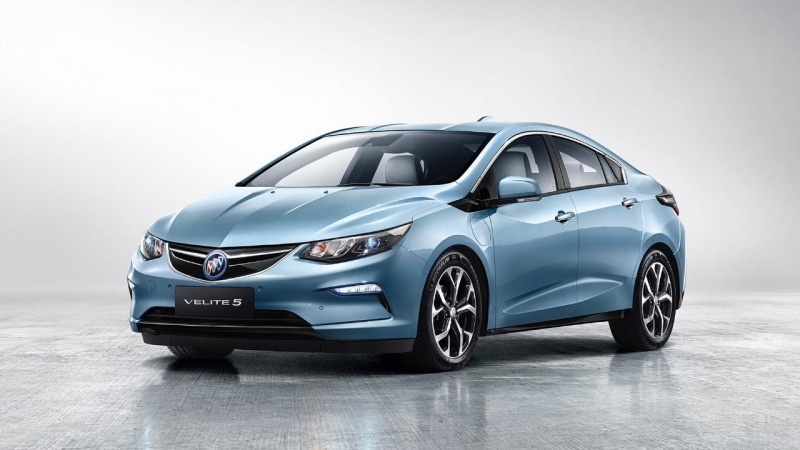
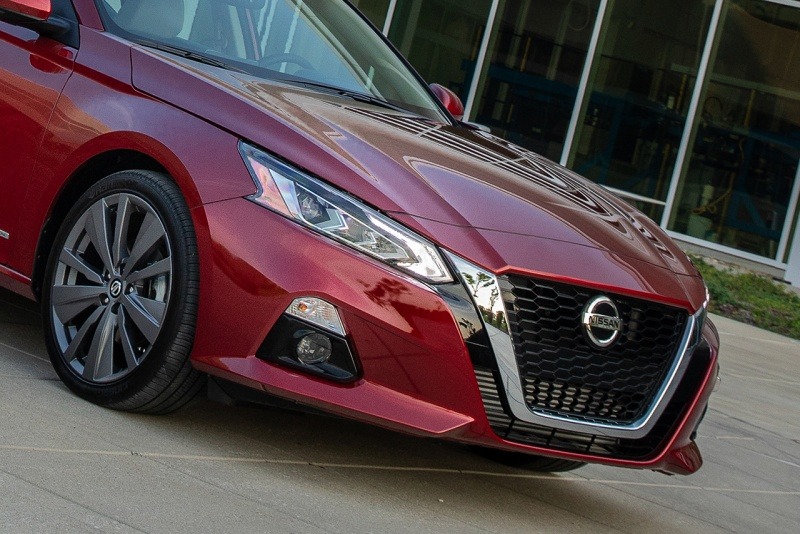
.jpg.cd4784a4aa5b334593f242a42fed6836.jpg)

